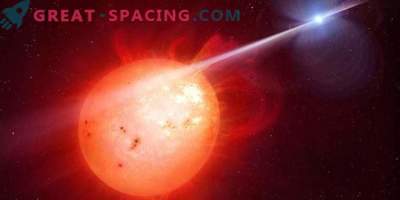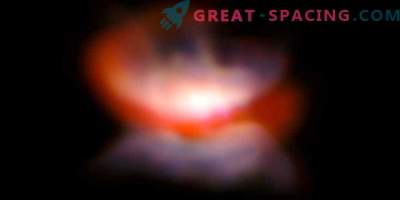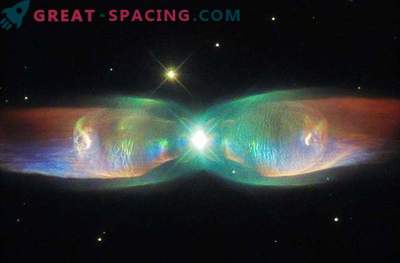
The Hubble Space Telescope discovered a white dwarf, absorbing a huge comet, scattering its remains throughout its atmosphere
Cosmos is a harsh and not very hospitable place, especially for comets. Composed of stony rocks and various volatile substances (water and ice), these interplanetary tourists are formed in the process of the origin of star systems and can travel for billions of years around parent stars in their original state. But because of some unpredictable event, a passing star breaks the original Kuiper belt or Oort cloud, and these frozen bodies fall to the place of their death.
And for a huge comet in orbit of a white dwarf 170 light-years from us, this doom came in the most dramatic way.
At that time, as determined by the chemical composition of white dwarfs, astronomers took advantage of the Hubble and noticed something special in the object WD 1425 + 540. The star is located in the constellation Bootes, and its polluted atmosphere consists of carbon, oxygen, sulfur, and, oddly enough, nitrogen. A spectroscopic analysis of the starlight of a white dwarf demonstrated that a massive comet, the chemical composition of which resembles Halley's comet, had to go through tidal destructive events from the parent star, causing it to break into pieces, spreading debris throughout the atmosphere. But the comet was larger than Halley by 100,000 times, and apparently carried twice as much water.
Although before there were similar white dwarfs, tearing asteroids and planets, but this one is special. Indeed, for the first time, nitrogen was seen in the cometary trash.
“Nitrogen is a very important element for life,” says Siyu Hugh of the European Southern Observatory in Germany. “And this particular object is richer in nitrogen than any other observable object in the solar system.”
White dwarfs are remnants of stars like the Sun. Our star in 4-5 billion years will exhaust hydrogen fuel from the core and begin to melt into heavy elements. This will end up being transformed into a large-scale red giant and will absorb Mercury, Venus and, possibly, Earth. Stellar winds will tear apart the outer layers of each other, creating a vast planetary nebula. And in its core a tiny and bright lump of degenerate substance, which is called a white dwarf, will hide. Its size is 200,000 times larger than our planet. The white dwarf of the Sun will be too small, but it has an incredibly high density. Therefore, if a comet or an asteroid passes by, tidal destructive forces will affect the object, leaving its mark in the form of a tug. And the fact that comets actively fall into the atmosphere of WD 1425 + 540 suggests that the star system has the features of the Kuiper belt, which survived the red giant stage of its star.
Therefore, observing the white dwarfs, we seem to look into our future, namely, what the system will look like after the death of the Sun.











































